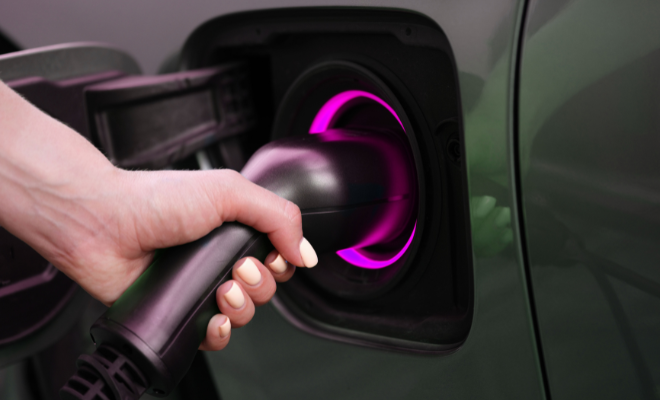Shaping the future of car finance: Why EVs need a rethink when it comes to insurance

By Christian Gorton, Marketing Director at CA Auto Finance
Electric vehicles (EVs) are undergoing an important shift in the auto world. And it’s not just about batteries, sustainability, or sleek new dashboards. It’s about perception.
Once seen as niche and futuristic, the electric vehicle (EV) is now becoming what it always aspired to be: just a car. It just happens to be powered differently.
But has public perception caught up with that reality? For private buyers, the cost of EV ownership, especially insurance, remains a sticking point. Company cars in fleets are already insured, which helps explain why fleets now account for the bulk of EVs on the road. In 2024, private EV purchases fell by 8.7% and made up only about 10% of private registrations, with nearly all growth coming from fleet buyers. As the market evolves, the shift towards used EVs may help, but these roadblocks still weigh heavily on one critical group: the next generation of drivers.
The insurance hurdle – why it still costs more to insure an EV
Insurance for EVs in the UK still typically comes at a premium, for reasons both practical and evolving.
- Battery replacement costs: The battery is the most expensive part of an EV. While newer designs are more modular and easier to swap, repairs can remain costly.
- Technology integration: Advanced sensors, integrated safety systems and proprietary software mean higher replacement and repair costs after even minor accidents.
- Write-offs vs repairs: Insurers sometimes declare an EV a total loss after modest damage, due to repair complexity or part sourcing, which increases overall claim costs and premiums.
Young drivers – stuck between a green rock and a financial hard place
Young drivers, who are often keen adopters of sustainable lifestyles, are being priced out of EV ownership due to high insurance fees.
Recent research has shown that children growing up today are not just passive observers – many are actively influencing the EV transition. In the UK, 17% of kids aged 6-15 say they’ve persuaded an adult to buy an EV. Over half (52%) say their future car must be electric, and nearly 3 in 10 see an EV as their dream car. With 92% saying environmental protection matters to them, it’s clear that values formed early, are helping shape future EV buyers.
However, the average annual policy for a 17-year-old in the UK is £2,262 – a large sum far beyond the reach of most first-time drivers. Until recently, EVs offered few budget-friendly options, leaving new drivers to choose used petrol cars with lower insurance costs.
While affordable EVs from emerging Chinese brands are entering the market, many fail to align with young drivers’ aspirations. The result? EVs cost more to insure, young drivers can’t afford them. We believe this is where tailored finance and insurance solutions can create a major shift, helping younger generations make the leap to EV ownership.
Addressing misconceptions – the repairability of EVs
Although in the early days many EVs were written off after relatively minor accidents, the common myth that any crash means an EV is a total loss, is no longer true. Modern EVs are increasingly designed with repairability in mind, from modular components to more easily replaceable battery packs.
The barrier isn’t whether they can be repaired – it’s whether it’s cost-effective. Repair costs can nudge insurers towards total loss claims even when repair is technically possible.
Hybrids vs EVs vs ICE – the insurance landscape
Hybrids carry both petrol engines and EV components, placing their insurance costs between fully electric and traditional petrol cars. For used EVs, premiums are now broadly in line with new models, as insurers have more data to price them accurately. This may influence consumer decisions, as used EVs could be seen as offering less of a price advantage if EV insurance costs continue to fall.
Tips for first-time EV buyers
- Get an insurance quote before buying. Too many buyers cancel finance after discovering unbudgeted premiums.
- Balance monthly costs wisely. Low monthly payments on a new EV may look tempting, but insurance is part of the same financial pot.
- Consider specialist EV insurers. They can offer tailored cover, including battery and charging equipment protection.
Why tailored insurance could be the missing link
At CA Auto Finance, we’re exploring how to better support EV adoption – and insurance is part of that puzzle. Partnerships with insurers could help create bundled solutions. Extended warranties for batteries or charging gear could add peace of mind.
Insurance pricing is highly individual – postcode, age, driving history, car spec and even job title all influence cost. But there are positive signs: bundled EV packages with finance, wall box installation, energy tariffs and hardware are emerging. That’s progress, and it shows collaboration is key.
As EVs transition from niche to mainstream, collaboration between automakers, insurers, and finance providers is essential. Together, we can help reshape perceptions, address cost challenges, and expand opportunities for all drivers.
The future of mobility isn’t just electric; it’s inclusive, sustainable, and practical. At CA Auto Finance, we’re here to help make that future a reality. An EV is no longer a futuristic novelty – it’s simply a car, powered differently. That shouldn’t mean it’s harder to insure, finance or drive.
It’s time we all started treating it that way.

